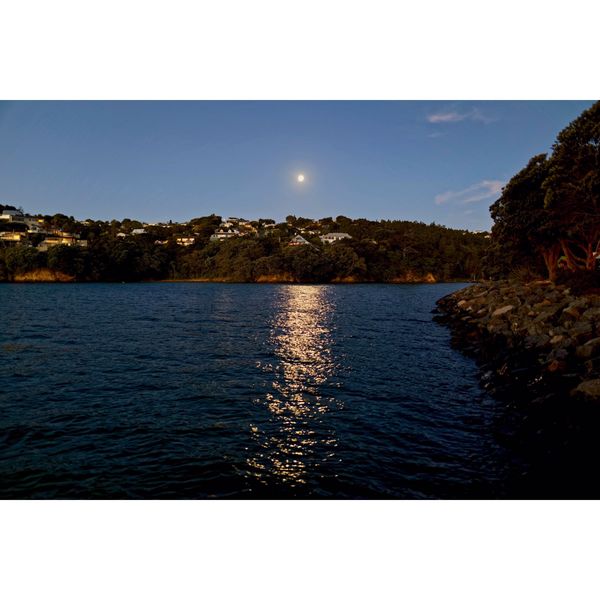Camera Upgrade
Feb 18, 2019 04:05:09 #
Captain Craig wrote:
Thank you for such a quick response. I have resist... (show quote)
I’ve been a Canon camera shooter for many years my investment is Canon L glass I may go to a mirrorless Canon camera I’m waiting for the next generation of Canons R series 24x36mm sensor pro version I understand one is coming late this year or early next year.
Feb 18, 2019 11:06:25 #
amfoto1
Loc: San Jose, Calif. USA
GrahamO wrote:
... b In terms of light transmission an f2.8 zoom ... (show quote)
This is incorrect.
f/2.8 is f/2.8 as far as EXPOSURE is concerned, regardless of whether the lens is used on a crop sensor camera or full frame camera. There is no "light loss" with zooms, any more than there is with primes. f/2.8 on a prime delivers the same light to a sensor as f/2.8 on a zoom. Plus, today's zooms are optically much better than those of the past. The best zooms now approach the image quality and distortion correction of prime lenses, while most lenses and/or post processing software programs are able to easily correct for any vignetting and chromatic aberrations that might occur. In fact, image quality concerns are less is especially true when using a full frame-design lens on an APS-C camera, which crops away the periphery of the image where vignetting and most CA occur, utilizing only the central best and sharpest part of the image rendered by most lenses. (Plus the original poster appears to be using a Canon 70-200mm f/2.8 lens... which could well be one that uses a fluorite element to largely eliminate CA. Over the years, two of Canon's four different 70-200/2.8 models have used fluorite. All three of their 70-200 f/4 lenses have used it.)
When sites like DXO (and people like Tony Northrup) refer to a lens "acting more like an f/3.5 or f/4 than like f/2.8", they are talking about how the lens renders DEPTH OF FIELD when it's used on an APS-C camera, compared to how it does on full frame. They ARE NOT referring to light transmission or exposure... which don't change.
Yes, a prime lens can be smaller, lighter, faster and considerably less expensive than a zoom.... it can even be "better corrected". There are very few zooms that have larger than f/2.8 max aperture, while primes with f/2, f/1.8, f/1.4 and even faster are widely available. One of the more extreme examples, a zoom including the 50mm focal length such as a 17-55mm f/2.8 costs more than $800, is over 3.25" diameter and 4.5" long, and weighs nearly 4X as much (just under 23 oz.) In comparison, a 50mm f/1.8 lens.... which is over a full stop faster... can be bought for as little as $125, is 2-3/4" diameter, 1.5" long and weighs less than 6 oz.
But as far as exposure is concerned, f/2.8 aperture on ANY lens - be it zoom or prime, wide angle., normal or telephoto, crop only or full frame capable - will deliver the same amount of light to the sensor.
The difference is how the lenses render DoF on different formats... and, even then, it doesn't matter if it's a zoom or a prime. Plus, it's actually an indirect cause of the difference in DoF. The reason "apertures on crop cameras act smaller" is due to the way we use the different formats, not due to any inherent difference in the actual DoF. In other words, a 200mm lens (zoom or prime, doesn't matter) at f/2.8 that's used to photograph an object 25 feet away will render exactly the same DoF, regardless of sensor format. However, that's not what we do. The reason it seems different is because when you put the 200mm lens onto a full frame camera, in order to frame the subject the same way you did with the lens on a cropper, you have to move closer to it with the camera and lens, and this change in distances is what causes the DoF the lens produces at that aperture to appear shallower and out of focus background objects to be more strongly blurred. Instead of moving closer, you could instead use a longer focal length lens on the FF camera... and this also will make any given aperture produce shallower DoF and stronger background blur.
In other words, f/2.8 "not acting like f/2.8" only pertains to how DoF is rendered, not to exposure. And the differences in the way DoF is rendered on different sensor formats is actually due to changes in distance and/or changes in focal length that are done to accommodate the change in sensor format.
For a zoom, f/2.8 is "fast". There are very few zooms that are faster, mostly due to size and cost limitations.
Primes can be faster, while also being smaller, lighter and less expensive. But primes aren't as versatile and convenient as zooms.
Feb 18, 2019 12:31:41 #
Captain Craig
Loc: Denver, CO
DelRae wrote:
I also have Canon Lens 24-70/2.8 And 70-200/2.8 ... (show quote)
Thank you DelRae. And thank you to all who have responded. I now appreciate this group more than I did before. Everyone has been incredibly helpful. I've got my sights on a 5D IV, and don't think I'll be straying. I was just really confused with all the options and trying to decipher which would be the right choice. But now it is set. I just have to figure out how to better compensate for the poor high school basketball lighting.
Feb 18, 2019 12:32:53 #
Captain Craig wrote:
Thank you DelRae. And thank you to all who have responded. I now appreciate this group more than I did before. Everyone has been incredibly helpful. I've got my sights on a 5D IV, and don't think I'll be straying. I was just really confused with all the options and trying to decipher which would be the right choice. But now it is set. I just have to figure out how to better compensate for the poor high school basketball lighting.
You'll love the 5D Mark IV.

Feb 18, 2019 12:50:15 #
Captain Craig
Loc: Denver, CO
amfoto1 wrote:
Your lowest cost and easiest upgrade would be to a... (show quote)
I mostly just give a digital copy of the photos to my family or friends. I have only printed a few for the wall and so far nothing bigger than an 8 x 10. What I want is that crisp clean in focus shots like the magazines and many of the photos I have seen posted here. I get a few that I am very happy with but I want to increase that number. I am my own worst critic. I've watched a ton of utube videos and found many helpful. I also recently purchased Tony Northrup's "Stunning Digital Photography" and "Lightroom 6." I am just getting into Lightroom and haven't done much with it. I just haven't taken the time to go through the lessons. Which I need to just make the time and do it. Thank you for your advice.
Feb 18, 2019 12:50:42 #
Captain Craig wrote:
I have been reading these communications for quite... (show quote)
You may be able to save a lot of money. Is there anything your current camera does NOT do that you need? If the answer is NO, you do not need to upgrade. Full frame is a very successful way for manufacturers to get consumers to spend a lot more of their hard-earned cash. It's the shiny new thing.
I would love to have objective members explain what type of photographer needs a full frame camera and why.
Thanks to all. >Alan
Feb 18, 2019 15:45:54 #
aellman wrote:
You may be able to save a lot of money. Is there anything your current camera does NOT do that you need? If the answer is NO, you do not need to upgrade. Full frame is a very successful way for manufacturers to get consumers to spend a lot more of their hard-earned cash. It's the shiny new thing.
I would love to have objective members explain what type of photographer needs a full frame camera and why.
Thanks to all. >Alan
I would love to have objective members explain what type of photographer needs a full frame camera and why.
Thanks to all. >Alan
Sure. If the OP is going to shoot indoor HS sports, he’ll need all the high ISO low light performance he can get, and that means fast lenses, full frame and shooting raw. That extra stop of low light high ISO performance is the difference between a shutter speed that freezes action and one that causes blur, or the difference between a noisey shot and a clean one. I’ve been shooting in low light HS gyms for years, and it caused me to move to full frame. A typical gym might cause you to shoot at 1/250 (1/500 is better for basketball), with an f2.8 lens wide open and an ISO of 6400-12,800. Recently, I’ve been moving to even faster primes, not just for the speed, but for mostly for the weight. My current favorite is a 135 f2L, but for versatility, the 70-200 f2.8 is a classic.
And then there’s the superior AF system, faster burst rate, deeper buffer...
Feb 18, 2019 15:47:19 #
Feb 18, 2019 15:59:36 #
amfoto1 wrote:
This is incorrect. br br f/2.8 is f/2.8 as far as... (show quote)
I’m sorry amfoto1 but what I wrote is NOT incorrect. In film and television lenses are calibrated in both T stops and F stops. T is for “transmission” and is used for setting exposure. F is for “focal” which is used for deciding depth of field. Zoom lenses have the most difference between T and F stops than primes because zooms are usually more complicated with more elements to loose light.
If you look at lenses that are made in both “photography” and “video” versions you will see that the “video” versions of the same basic designs have a T stop of maybe T3.1 and an F stop of maybe F2.8
When you are using your digital camera the built in light meter compensates for this difference but it will usually set a slightly lower shutter speed with an f2.8 zoom than with an f2.8 prime.
Zooms have improved but similar technology advances have also improved primes if you look for example at Sigma Art lenses.
An exception to zooms V primes is the Sigma 18 / 35 f1.8 zoom ( which I own ). It has a T stop of T1.8, just the same as it’s F stop of f1.8 and is very popular for video. But it is only a 2X zoom.
(I was not discussing APSC and Full Frame where of course 2.8 for example is 2.8 on either.)
I own several zooms as well as several primes and the primes have much more light gathering power than zooms.
Below, last night a snapshot at f1.4 with a Sigma 24mm f1.4 Art hand held after dark.

Feb 18, 2019 16:19:38 #
Captain Craig
Loc: Denver, CO
GrahamO wrote:
I’m sorry amfoto1 but what I wrote is NOT incorrec... (show quote)
That is an amazing photo. I love the clarity and the crispness. That is where I want to be. Ok, I'm going to send a pic I took and edited in Lightroom. Please comment and be gentile.
Feb 18, 2019 16:21:41 #
Captain Craig
Loc: Denver, CO
Captain Craig wrote:
That is an amazing photo. I love the clarity and the crispness. That is where I want to be. Ok, I'm going to send a pic I took and edited in Lightroom. Please comment and be gentile.
Feb 18, 2019 16:25:49 #
Feb 18, 2019 18:18:46 #
Feb 18, 2019 19:08:19 #
Captain Craig wrote:
I mostly just give a digital copy of the photos to... (show quote)
In your post above are the "keys" to improving your photography that don't involve a new camera. The sooner you (a) change to capturing in RAW and (b) begin getting serious in your post processing, the sooner your images will improve. Those images you're admiring in magazines and on UHH exhibit expert-level post-processing coupled with expert shooting technique. Sure, many times, the top camera models are used, but is you believe only the best equipment produces the best results, spend the 3:49 needed to view the examples in this video: https://youtu.be/4BLa7Bj2fU4 Note the EOS T3i using in this example and no L lenses.
As noted before, you have two excellent lenses. I'll assume you have LR or even the LR/PS subscription. Along with free utube training and a highspeed internet connection, your have all you need to get started on your journey. You're not limited to waiting to get started until after funding a full-frame body.
Feb 18, 2019 19:36:18 #
Sidwalkastronomy
Loc: New Jersey Shore
I have a canon 77D. I've taken many action shots from boats flying through the inlet to the Atlantic air show all with excellent results. Much lighter than the next step up. It also has the new processor.. it's not pro but it's a fine camera.
If you want to reply, then register here. Registration is free and your account is created instantly, so you can post right away.






